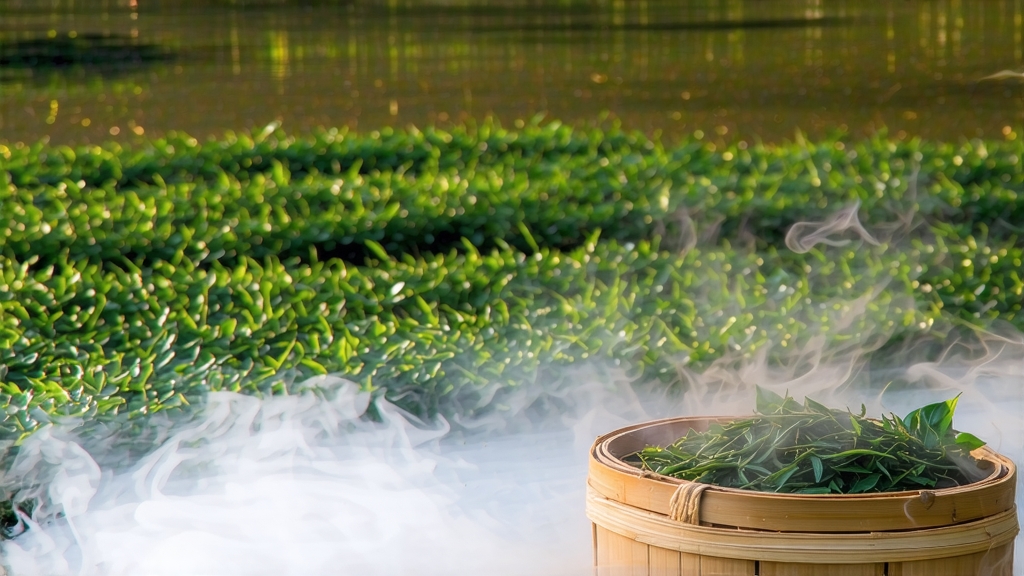
Longjing, literally “Dragon-Well,” is the most celebrated among China’s more than one thousand green-tea entries. Its fame rests not on marketing budgets but on fifteen centuries of recorded history, a micro-climate that feels designed by a benevolent tea god, and a craft so exacting that a single careless minute can turn jade coins into burnt straw. To understand why Longjing is poured for presidents, poets, and pragmatic farmers alike, one must follow the leaf from legend to laboratory, from hillside to glass cup.
Origin stories begin in 250 CE when a Daoist hermit is said to have discovered a spring on Lion Peak, Hangzhou. The water formed a shallow well; when stirred, its swirling currents resembled a dancing dragon, hence the name. Tang-dynasty gazetteers already list “Xinzhou” tea from the same county as tribute, but the tea we recognize today—flat, jade-green, sword-shaped—emerged during the late Ming dynasty when pan-firing replaced steaming. The Qing emperor Qianlong’s visit in 1751 canonized the eighteen imperial bushes still living on Shifeng mountain; he pocketed a handful of shoots, buried them at Hangzhou’s Hugong Temple, and decreed that only leaves picked before the Qingming festival could enter the palace. That edict survives as the modern grading benchmark “pre-Qingming” or Mingqian Longjing.
Geography is destiny. The West Lake micro-basin enjoys 1,600 mm of misty rain annually, 78 % average humidity, and a quartz-sand soil that drains like a colander yet hoards trace minerals. Daily temperature swings of 8–10 °C slow the conversion of amino acids into catechins, yielding a broth that is sweet first, astringent second. Within the 168 km² officially protected zone, five peaks—Shifeng, Longjing, Yunqi, Hu-pao, and Meijiawu—produce leaf so distinct that connoisseurs speak of them like Burgundy crus. Shifeng gives mineral depth, Longjing village offers floral lift, Meijiawu delivers a nutty creaminess, while Yunqi and Hu-pao balance fruit and bamboo.
Cultivar matters as much as coordinates. The traditional clone is Qunti, an open-pollinated landrace with small, thick leaves that tolerate high heat during pan-firing. Since 1985 agronomists have released #43, a earlier-sprouting variety whose uniform emerald color photographs beautifully for e-commerce yet sometimes lacks the lingering aftertaste of its ancestor. Old-grove bushes, some over sixty years, still grow on south-facing terraces at 300 m, their roots intertwined with wild osmanthus whose October perfume subtly perfumes next spring’s bud.
The craft calendar begins around March 15 when night temperatures creep above 5 °C. Experienced pickers, mostly women in sun hats indigo from repeated dyeing with Strobilanthes cusia, break only the apical bud plus the adjacent unfolded leaf, a unit called “one flag, one spear.” The pluck must snap, not tear, so the tiny pubescence on the underside stays intact; these trichomes scatter light and give the dried tea its silvery down. A seasoned hand gathers just 600 g of fresh leaf in eight hours—barely enough for 150 g of finished tea.
Withering is skipped; oxidation is the enemy. Within two hours of plucking the harvest is back at the village cooperative, spread 3 cm deep on bamboo trays and fanned with gentle mountain air for 30–40 minutes. The goal is not dehydration but evaporation of grassy aldehydes, softening the leaf for the signature flattening step.
Pan-firing, chaozuo in local dialect, is where science meets ballet. The wok is seasoned cast iron, 64 cm wide, tilted 25° over a lychee-wood fire that holds 220 °C for exactly 90 seconds. The master—always a master, never a machine—uses bare hands, the left pressing downward, the right sliding sideways, coaxing the leaf to lose 30 % moisture while its internal cell walls rupture, releasing glutinous starch that acts as natural glue. The gesture is called “push, press, shake, fling,” four Mandarin words that sound like a drum solo when performed at speed. After ten minutes the temperature drops to 80 °C; the leaf is shaped into the